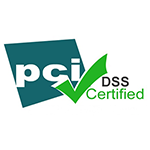© 2025 Next Level Business Services Inc. All Rights Reserved.
Helping Unproductive Service Order Truck-Rolls using Machine Learning
By Abhijit Bhattacharya
When you hear the phrase “unproductive truck-roll,” it does not sound as sexy as say “autonomous cars,” I will be the first one to admit that. That, however, does not make this any less significant a problem worth solving for. In fact, the importance of service order truck-roll productivity is something that cannot be overstated: without a well-coordinated service order truck-roll, we wouldn’t have our internet and cable installed (yes, there are self-installation; but they still do not constitute a large enough proportion of all order installations – we are still literally in the world of a technician from the cable/telecom company driving down to our residence/office to install our service). From the customer’s point of view, proper installation is an imperative because internet is today’s electricity. We cannot function without a reliable Wi-Fi in our homes and offices (or for that matter, anywhere).
Now let us look at the issue from the perspective of the service provider (i.e., the telecom company, the cable company, etc.). Perhaps citing a few hard numbers would help understand their predicament a little better – each of these companies roll out about 100K-200K trucks every month where each trip can cost between $80-$150; out of these trips, around 20%-25% end up being “unproductive” (i.e., a successful installation or service repair did not happen). This amounts to $2M monthly cost basis loss for the service provider, even if we take the low side numbers. So, we are talking about a $25M+ yearly unproductive cost impact (not even going into the revenue risk arising out of losing the customer on account of the failed installation).
I hope that with this background, I have been somewhat able to impress upon you why this a problem that needs addressing from both the customer and provider sides. This is, however, easier said than done. Service order truck-rolls have dependency on (and implications for) for multiple business functions – customer service who book the orders, operations who plan the dispatches, field-services et al. Therefore, we must first create a single version of truth data structure that captures every touchpoint in the service order’s journey. Some of these touchpoints would involve interfacing with the customer while others would be internal operations for the service provider.
So the question is, what value does Innover deliver in the mix of all of this?
In gist, we help our clients by institutionalizing an end-to-end automated unproductive truck-roll mitigation solution (NLB TruckSmart™) which:
Identifies the causal drivers of truck-roll failure analyzing (typically) 20+ data sources(service order details, appointment details, tech in route callback, outbound+inbound SMS, product line card details, customer demographics, failure reason groups, capacity metrics, call event logs, etc.) and 100+ candidate variables
Employs ensemble ML techniques (scoring, XGBoost, Random Forests, NLP, and Deep Neural Networks) to develop unproductivity risk prediction ‘confluence model’ that captures the combined effect of the causal drivers accounting for interaction effects and collinearity
Recommends ‘action’ for every upcoming truck-roll to mitigate failure risk
Automates implementation providing daily extract files for truck dispatch planning & operations team
Our proprietary solution typically captures 80% of all unproductive truck-rolls by focusing on just 30% of the overall upcoming truck-roll population (basis the unproductivity ML model) – even before a truck is dispatched. This has routinely translated in $3M+ in pure cost basis savings from unproductivity mitigation for our clients, not to mention the improved customer experience and revenue leakage prevention from order cancelation & customer churn. And the best thing is that once the model has been deployed, its label propagation feature ensures that it generatively learns from new data points (i.e., new experiences) and as such maintains and improves itself while making a bottom line impact every instance NLB TruckSmart™ platform churns out that daily production file.
What makes the TruckSmart™ effective and scalable is the fact that it has been perfected on millions of truck-roll data points across multiple clients. In our experience, some of the key causal drivers and their impact are astonishingly consistent across different companies – e.g., an upcoming truck-roll where a due-date has been missed already is ~3x times more likely to be unproductive, any negative sentiment incoming SMS from the customer increases the unproductivity risk by more than 40% – while the exact impact numbers could slightly vary by company, the differences are not drastic and the overall story hardly changes. This allows a plug & play facility where we can leverage the baseline model and the underlying architecture to customize client-specific ala carte models in just 6-8 weeks, including automated POC implementation. As a client, wouldn’t you call that a smart roll?
Abhijit Bhattacharya
Chief Data ScientistTalent Solutions








